Avoid placing mulch over seeds you have just sown. Mulch will stop seeds from getting light and the new plant may not be able to push through. Mulches such as mixed tree mulch, bark, straw, sugar cane, compost and landscaping rocks will stop your seeds from growing.
What happens when you mulch over seeds
When mulch you mulch over seeds it will act like a blanket over the soil, stopping the seed from getting light. Seeds need light to sprout so the mulch can stop them from growing well.
The mulch can also stop the seeds from growing through by physically blocking the sprout.
Mulch works best when kept away from seeds and placed back around more advanced plants. When the seed has grown 3-4 inches high, bark mulch, straw or sugar cane mulch can be moved around the plant. This will stop moisture loss from the soil, stop weeds and improve soil structure.
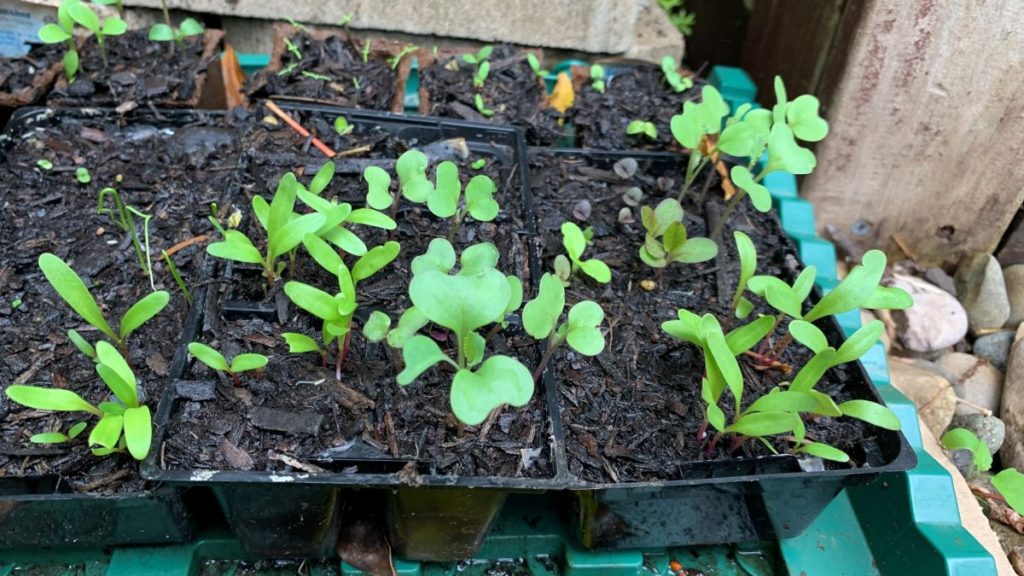
When to mulch over sown seeds
Mulch should be put around seedlings and not over seeds seeds. Mulch can easily move to cover the seed so wait until they have grown at least 3-4 inches high so the mulch won’t move on top of them. When the seeds have grown to this size, gently move bark mulch or straw around the seedling.

Why you should not mulch over seedlings
Mulch works by stopping light and covering soil to stop weeds. If you place mulch over the top of seedlings this can block light, prevent growth and ultimately the plant may die. The best way to mulch seedlings is to place the mulch around the base leaving a 2-3 inch gap between the plant stem and the mulch.
Placing mulch over the seedling root zone and leaving a gap between the plant stem and the mulch can stop the plant stem from rotting. Keeping mulch off the seedling leaves is important so that the leaves can get sunlight to make food for the plant.
Why you should not mulch over wildflower seeds
Do not put mulch on top of wildflower seeds in when you sow them in your garden bed or a pot. Wildflower seeds are usually small and need easy access to light. Mulch will block the light and stop the seeds from sprouting through. Wildflower seeds should be covered with a thin layer of seed raising mix to weigh them down and keep them moist.
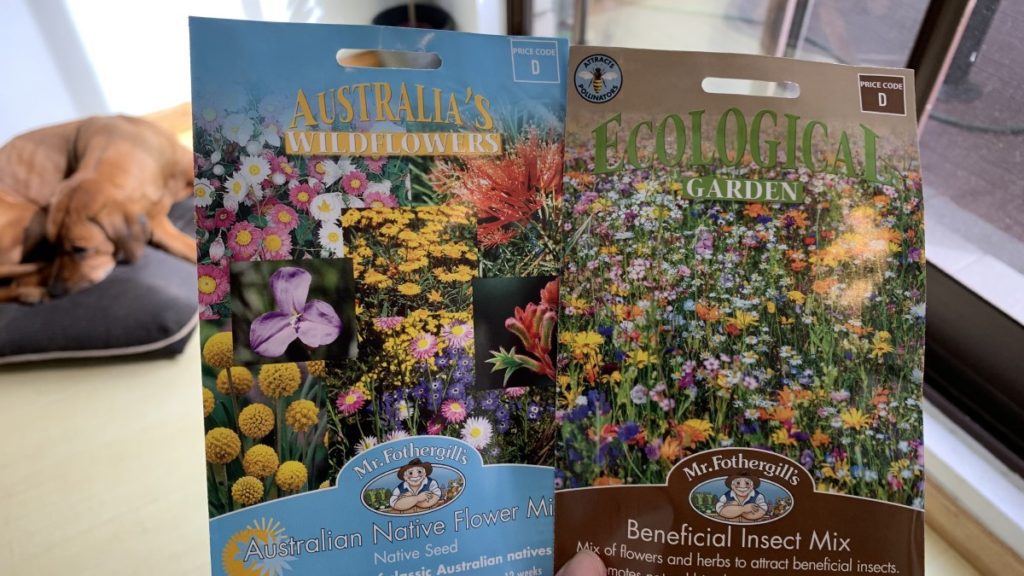
Mulch can be moved around your wildflower plants once the seeds have grown to 3-4 inches high. This can stop weeds from competing with your wildflowers. Do not add mulch under your wildflower plants if you want them to self-sow the next year. Mulch will stop the seeds from reaching the soil and prevent them from growing.
Problems with putting mulch over seeds
The problems with mulching over seeds is that it blocks light, stops the seed from reaching water and nutrients available in the soil. Mulch works in nature to stop other plants from competing.
Fall trees for example will drop a thick layer of leaves on the ground underneath their root zone. This stops other trees and shrubs from growing in their area and competing for water and nutrients. Adding mulch in your garden works the same way and will stop your seeds from growing through.
Types of mulch to avoid putting over seeds
There are many types of mulch that should be kept away from your seeds. Mulches such as tree mulch, bark mulch, straw, sugar cane, compost and landscaping rocks will stop your seeds from growing. This is how each mulch will affect your seeds.
Mixed Tree Mulch
Mixed tree mulch contains both green parts from the leaves of the tree and larger bark pieces made from chipping branches. This will usually come from arborists that are trimming backyard or street trees. This mulch forms a thick layer that stops weeds from growing through. If you place a layer on top of your seeds they will not get enough light and are unlikely to grow.
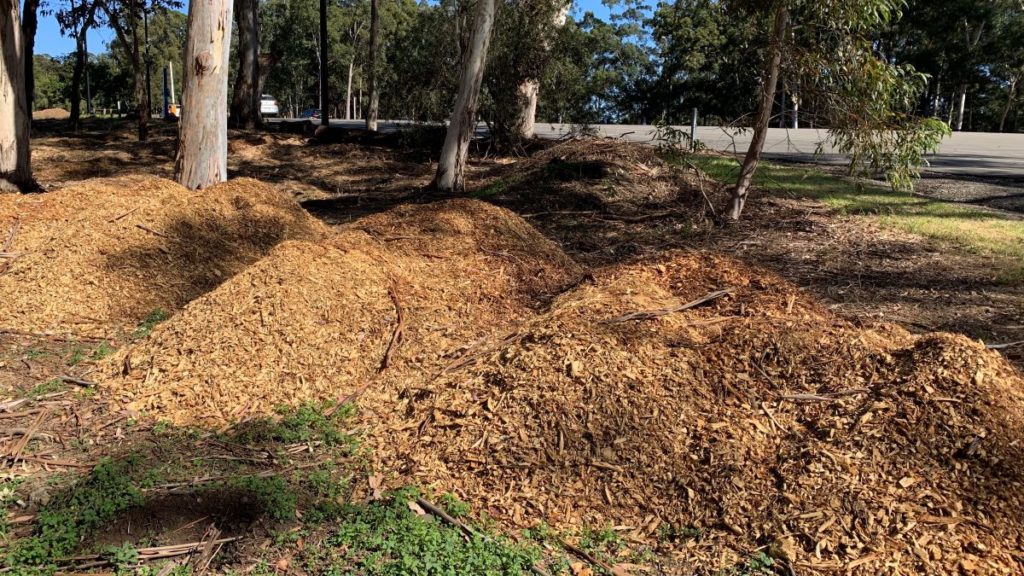
Bark Mulch
Bark mulches are made up of larger pieces of bark and are usually sifted before they are sold to remove smaller pieces. These large bark pieces form a long lasting mulch and can be bought in different colors including red, black and brown. These large pieces of bark will stop seeds from growing in your garden so do not place this on top.
Straw and sugar cane mulch
Straw and sugar cane mulch are light mulches. Straw is made from the leftover stems of wheat while sugar cane mulch is made from the stems of sugar cane. These are the lightest mulches available so seeds may be able to grow through a very thin layer. A thin layer offers little benefit to preventing weed growth and may reduce the number of seeds that successfully push through.
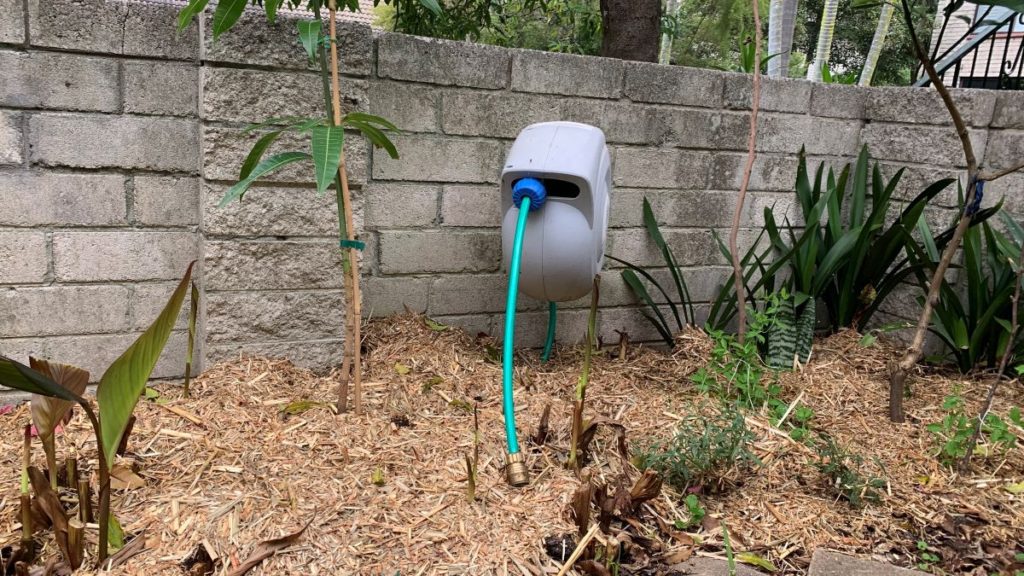
Planting seeds in mulch
You should not plant seeds into mulch but instead move the mulch back and plant directly into the topsoil. The only time you could plant in mulch is if you have a thick layer of compost mulch. If the compost is well aged it will contain enough structure to hold nutrients and water for the seed.
You can plant pumpkin seeds directly into compost There is more on this here in my previous article. Pumpkins like a soft, moist soil so compost is perfect for growing them. Make sure the compost is at least 6 months old and completely broken down before planting.
You may also notice other seeds start to grow through your old compost. These can be from leftover seeds from your food scraps. Leave them there to see if they grow however remove them if they are a potato because they are unlikely to grow well.
Mulching over seeds – FAQ
Do not place mulch over carrot seeds as mulch can stop the seed growing. Wait until the carrot plants have grown and place mulch around them, leaving around 3 inches of space between the carrot mulch and plant.
Tomato seeds will not grow through mulch. Tomatoes are a small, thin seed so will need maximum light to sprout and grow through. Use sugar cane mulch or straw mulch around the tomato plant when they have grown their second leaves. Leave 3 inches of space between the plant stem and the mulch.
Peas are a large seed but they will not grow as successfully through mulch. When planting sweet peas or snow peas rake back any mulch and expose the soil. Plant the seed 1 inch deep and cover with soil. Water the peas in but do not water again until you see the sprout grow through.
After the peas have grown through you can place mulch near the plant and this will help to keep the water in and prevent weeds.
Beans are a large, strong seed and contain lots of nutrients for the seed to sprout. Beans have the greatest chance of all seeds of growing through a light covering of mulch including straw or sugar cane. It is still best to leave them without mulch on top to give them the best chance of getting enough sunlight.
Mulch Guide – What mulch to use where
Mixed tree mulch
Use mixed tree mulch which includes green leaves and brown twigs and branches underneath citrus trees, advanced trees, annual flowers, and garden beds. Do not put this in your vegetable garden as it is long lasting and can temporarily lock up nitrogen keeping it away from fast growing vegetables.
Bark mulch
Use bark mulch between stepping stones, under trees and on paths. Bark mulch with larger pieces will last over 6 months and is great for foot traffic. Bark mulch makes a great addition to your garden as it comes in a variety of colors, can be easily moved and is low cost. Use it for movable paths or between garden beds.
Sugar cane mulch
Sugar cane mulch can be used under newly planted fruit trees, in vegetable gardens or around annual flowers. Sugar cane will break down quickly adding extra organic matter and carbon to your soil and encouraging microbe growth. This will also attract worms to the surface to break down the organic material and bacteria to improve soil and increase aeration.
Straw mulch
Use straw mulch in garden beds, under strawberries, or laid in thick biscuits around fruit trees. This will stop weeds and keep moisture in the soil. Top up straw mulch each season to keep weeds down.
Pea straw mulch
Pea straw mulch is fantastic under fruit trees, especially citrus. Pea seeds will be left in the pea straw mulch which will grow over cooler months into pea plants. Dig these into the soil to add nutrients back for your plants. Be careful not to disturb the soil near the root zones of plants. This can damage small feeder roots near the surface.
Grass clippings
Grass clippings can be used as mulch under large trees in open areas. When using grass clipping, make sure that it doesn’t contain any weed seeds. Hot composting grass clipping is another way to use them and turn them into compost. Check out this article for more on hot composting.
Fall Leaves
Fall leaves can be turned into compost or leaf mold using this method. You can use leaves as mulch by laying dried leaves straight onto garden beds. Leaves can blow away or move around your garden if placed without composting them first. Over time, they will break down adding organic matter to your soil.
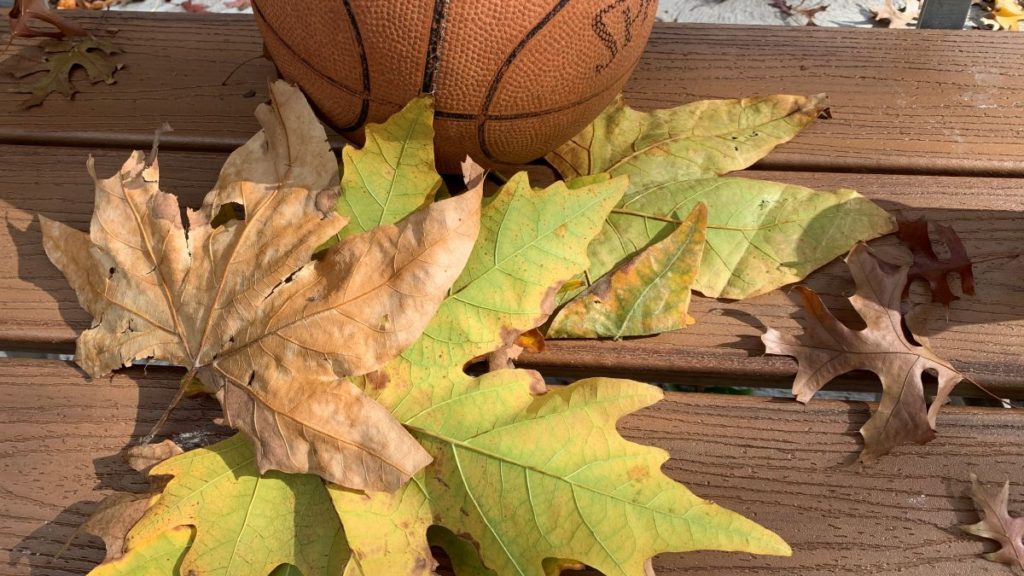
How to grow seeds at home
Seeds can be planted straight into soil or into pots. Some seeds prefer to be planted straight into garden soil because they won’t like to have their roots disturbed. This includes root vegetables such as carrots and beetroot and pea and bean seeds.
Wildflower seeds can be scatter sown over the soil in your garden and covered with seed raising mix or planted in pots. I am growing wildflower and pollinator flower mixes in small pots using seed raising mix. This makes it easier to keep the seeds moist while they are growing. I can also move the pots around to get the morning sun during fall.
If you are scatter sowing flower seeds, rake the soil first to remove the mulch. Make small holes with the rake and then scatter the seeds on mixed with sand. Cover the seeds with seed raising mix and water them in. You will need to make sure the seeds are kept moist until they grow to 3-4 inches high. Water on warm days and you will have a great wildflower garden in 2-3 months.
Mulching over seeds – Summary
Seeds need light and moisture to grow so do not put mulch on top of seeds when you plant them. Mulch will block the light and can stop them from growing. Although some seeds might make it through the mulch, you will get much better results if you let the seed grow to a few inches first.
Mulch can be moved around the seedling once it has grown. Keep a 1-2 inch gap between the plant and the mulch to prevent stem rot. Mulch is fantastic for seedlings once they have grown. It will stop weeds from growing, keep moisture in, encourage worms to the surface and increase microbe activity.
Mulch is an essential addition to any garden and understanding what mulch to use where is a key skill to learn as a gardener. Some mulches will be easily available so choose a mulch local to your area and is affordable. You will be replacing mulch often so choose something that you can easily get to your home.
The best mulches for home gardens for me are mixed tree mulch, sugar cane mulch and peas straw mulch. You should use the mulch you like the look of and matches your plant needs.
Happy mulching.
I am an accredited practicing dietitian, experienced gardener and a dedicated cook. I love writing and sharing my experience so you can learn from my successes and mistakes.
